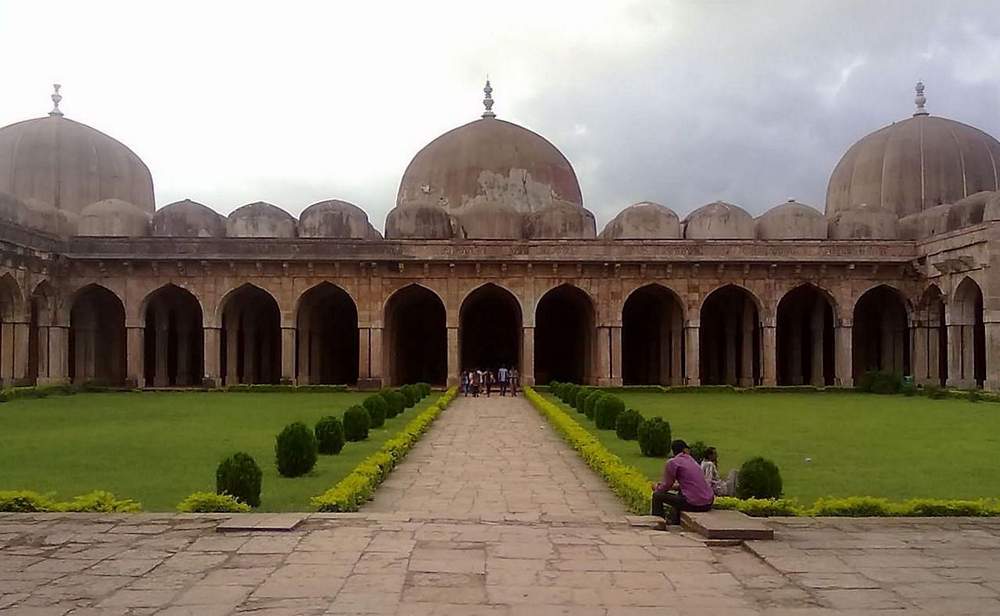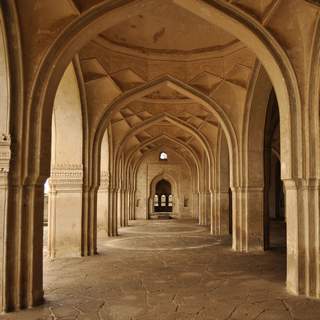
Jumma Masjid at Bijapur has the characteristic of expressing the early characters of the Adil Shahi architecture. In fact, some features of the earlier Bahamani style can also be seen in this monument. Thus it is a good example for the beginning of the Adil Shahi style which culminated in other monuments as it Gol Gumbaz and Ibrahim Rauza.
The Jumma Masjid mosque was built by Ali Adil Shah I in about 1570 AD. It is the largest and most beautiful mosque in Bijapur with series of arches. In fact, the arches are the most important character of this building. It seems it was never completed because it still lacks two minars, which were intended to flank the two sides of the eastern entrance. Though unfinished in this respect, it presents an elegant look.
The mosque is a huge structure with a rectangle of 450 feet long and 225 feet wide. The walls of this building offer a vast area of simple and plain masonry. However, the monotony of the simplicity is relieved by exterior decorations.
The uniqueness of this mosque is the construction of two rows of arches one above the other. The builder has selected the lower rows for ornamentation. The mosque contains a courtyard which is a square of 155 feet each side. This has a row of seven arches on each side and over them projects a wide and deep cornice on brackets.
 The interior of the sanctuary is equally elegant and impressive. It consists of a large quadrangle, which measures 208 feet in length and 107 feet in width. This is divided into five aisles with the help of arches.
The interior of the sanctuary is equally elegant and impressive. It consists of a large quadrangle, which measures 208 feet in length and 107 feet in width. This is divided into five aisles with the help of arches.
The innermost part is a square nave, each side measuring 76 ft. It has twelve arches, three on each side. These arches intersect above and produce an octagonal cornice that supports the base of the dome. The shape of the dome is pleasing with small isles and small arches all round and a decorated parapet above. Thus, it provides a decorative base for the dome. The mihrab consists of elaborate mural design in relief with bright colors.
Ali Adil Shah I on his return from his victorious and memorable expedition against Ramaraya of Vijayanagara and his treasury overflowing with spoils of war, naturally thought of creating a place of worship (mosque).
The Sultan summoned architects and artisans from Persia and elsewhere and hence the structure has become a building of great elegance, beauty, and majesty.